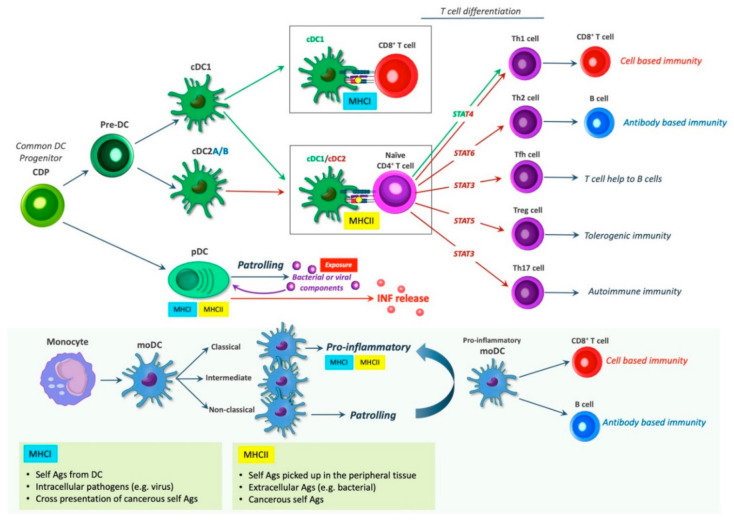Figure 3.
DC subsets and T-cell differentiation. Various DC types exist that partake in regulating immune reactions. Depending on the context, DCs may induce the activation of different T cell subsets. cDC1s can present Ags on MHCII to naïve CD4+ T cells to induce Th1 response or cross-present Ags on MHCI to cytotoxic CD8+ T cells, both resulting in cell-based immunity. In mice, cDC1s and cDC2s can induce Th1 cell and Th17 cell skewing, respectively, whereas human cDC2s can induce both Th1 cell and Th17 cell skewing [69]. cDC2s induces the T-cell differentiation of naïve CD4+ T cells through MHCII Ag presentation, giving rise to the T cell subsets: Th1, Th17, Th2, Tfh, and Treg, which induce cell-based immunity, autoimmune immunity, antibody based immunity, T cell help to B cells, and tolerogenic immunity, respectively. pDCs express both MHCI and MHCII and patrol the bloodstream and peripheral lymphoid organs. When exposed to viral and bacterial infections, pDCs produce type I interferon (IFN). MoDCs are divided into classical, intermediate and non-classical subsets, of which the classical seem to be pro-inflammatory, while the non-classical subset exerts patrolling functions. The pro-inflammatory moDCs induce cell based- and antibody-based immunity via CD8+ T cells and B cells, respectively.

